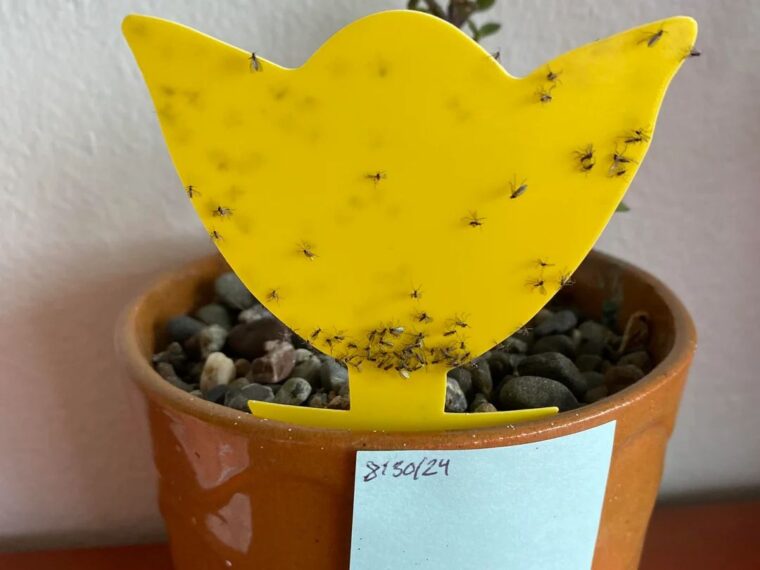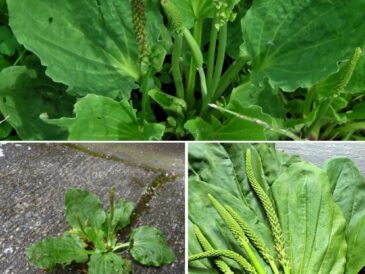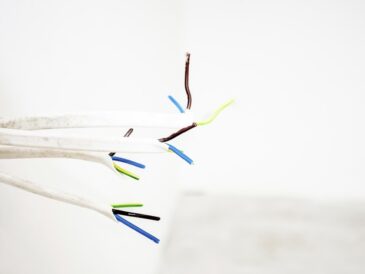Apply a synthetic insecticidal solution
When all remedies fail in the attempt, then only go for this step. There are many varieties of chemical spray available in the market for pest control management that target either the larval or the adult stage of the gnats.
Try to target one stage of their lifecycle and maintain a routined spraying method to eradicate them. Reapplying pesticides (insecticides) for a scheduled period is necessary to eliminate these nasty gnats.
Hydrogen peroxide is an effective chemical for this process with an immediate effect on the larval stage. Mix water and hydrogen peroxide in a 4:1 ratio and soak the soil with this solution.
You can use a diluted solution of neem oil. Apply neem oil and water solution to the soil mix to kill the larvae or spraying equipment to kill the adult gnats. You can apply pyrethrin sprays, too, as they have a massive toxic impact on both larvae and adult gnats.
Whatever you use, just keep a check on the amount of these chemicals you are using. Never exceed the mentioned dosage, or else you will end up harming your plant.
Natural ways to get rid of gnats
If you are a plant lover, you are an eco-conscious person too. Hence using too many synthetic products, chemicals may not come to your list. It shouldn’t come to anyone else’s list either.
However, while opting for pest management, natural and biological control should be the first preference, mainly when you have numerous plants to take care of.
We have already talked about some organic solutions like the application of vinegar mixture. Let’s now get some knowledge about the biological control of gnats.
Use beneficial nematodes
Adding such weird named creatures to an already infected soil may seem a bit counterproductive, but trust us, it can prove to be immensely effective.
Nematodes are small worm-like invertebrates that come under the category of flukes and are excellent in targeting the larval stage of the gnats without causing any harm to the plant.
Being parasitic, these nematodes (includes Steinernema feltiae) penetrate the gnats’ larvae and release a bacteria inside their body that costumes the whole larvae from the inside.
Grow insectivorous plants

If you have few indoor plants and want to save them from pest infestation and gnats, go for some insectivorous or carnivorous plants like sundew (Drosera), pitcher plants, etc. Try to grow these species near the houseplants.
Gnats get stuck to the sticky parts of these carnivorous plant species, and they feed on those insects to fulfill their nitrogen needs.
Go for some predatory species.
Along with parasitic nematodes and carnivorous plants, predatory mites or rove beetle larvae too are great options for the biological control of gnats. These are available from online supplies.
However, predatory mites and rove beetle larvae are best suited for greenhouses and sealed conservatories.
How to prevent gnats in indoor plants?
Prevention is always better than cure. While you apply and reapply different strategies to eradicate gnats from your indoor plants, once an infestation occurs, there remains a possible chance of their recurrence every single time.
The best way of dealing with these whizzing creatures is to prevent them from coming near your plants from the start.
Here are the preventive measures for you to follow:
Avoid overwatering

Soggy or damp soil caused by overwatering is the primary zone that houses these gnats. So the most crucial factor here is regulating the watering schedule properly.
Allow the soil to dry out completely before applying water. Eggs and larvae generally die in dry soil.
Choose a pot with sufficient drainage holes
Even though you are watering the soil correctly after checking the soil moisture content, your plant can still end up rooted in damp soil if the pot lacks sufficient drainage holes as water will remain stuck in the soil mix, making it soggy.
Use a pot with enough drainage holes that allow the water to come out from the soil mix. Remember to drain the excess water that gets accumulated in the saucer.
Use a porous pot
Instead of using glass or plastic planters, try to use porous pots. You can go for terracotta planters as these pots allow free movement of water. Such planters allow airflow into the soil, keeping it dry.
Use a fresh soil mix.
Don’t reuse oil soil mix as it can contain larvae and eggs of gnats. Always fill the planters with fresh, clean soil mix to avoid contamination.
Remove dead leaves or decaying matter from the soil.

Gnats larvae feed on decaying organic matter. Hence it is vital to keep the soil clean to avoid population growth. Remove the withered leaves or other waste matter from the soil every 2-3 days.
Cover the compost
Most of the composts used have been sterilized, so they generally do not contain any fungus or pest.
If you want to keep the compost away from gnats’ reach, you can cover it with glass pebbles or mulch grit or gravel. This will prevent the gnats from laying their eggs on the potting medium.
Don’t use homemade garden compost as being unsterilized; it may carry pests or fungal species.
Keep the surroundings clean.
Gnats have an affinity for wet, unclean environments. Keeping the surroundings clean, allowing proper sunlight into the room, cleaning the dustbins will reduce the chance of gnats infestation in your house and on your plants.
Other ways to prevent gnats
Before bringing plants inside, inspect them thoroughly to ensure they are free of any insects. Before you purchase a new plant, remember to check for any such insect infestation.
Even after bringing it home, keep the new plant away from your other plants for a few days. Once you are assured of the pest’s absence, you can bring it to the desired spot.
These are some of the basic strategies you can act on to keep gnats away. We hope it will solve your issue effectively. For an efficient outcome, follow the tips mentioned above in regular intervals.
Final words
People are seen to apply essential oils such as peppermint, mint, lavender, eucalyptus to drive out gnats. Well, it can be an effective strategy as gnats hate the strong aromatic odor of these components. Among all these, peppermint is the most effective one.
Fruit flies and fungus gnats both come from eggs laid on unripe fruits. The larvae of the gnats feed on rotten fruits and become adults. The gnats can also enter your house through open windows, newly bought plants from nurseries, or the garbage bin.
Not all flies are harmful or disease-causing agents, but they impact the overall growth of your indoor plants. By keeping gnats and other pests at bay, you can manage your plants to grow in a healthy environment with a luscious, lustrous appearance, lifting the beauty of itself and your house too.




